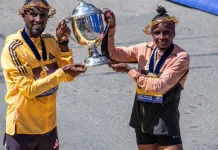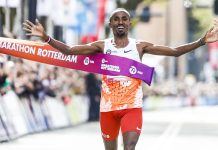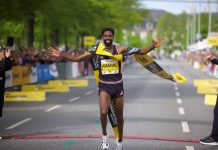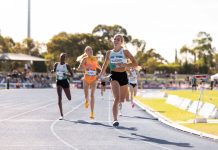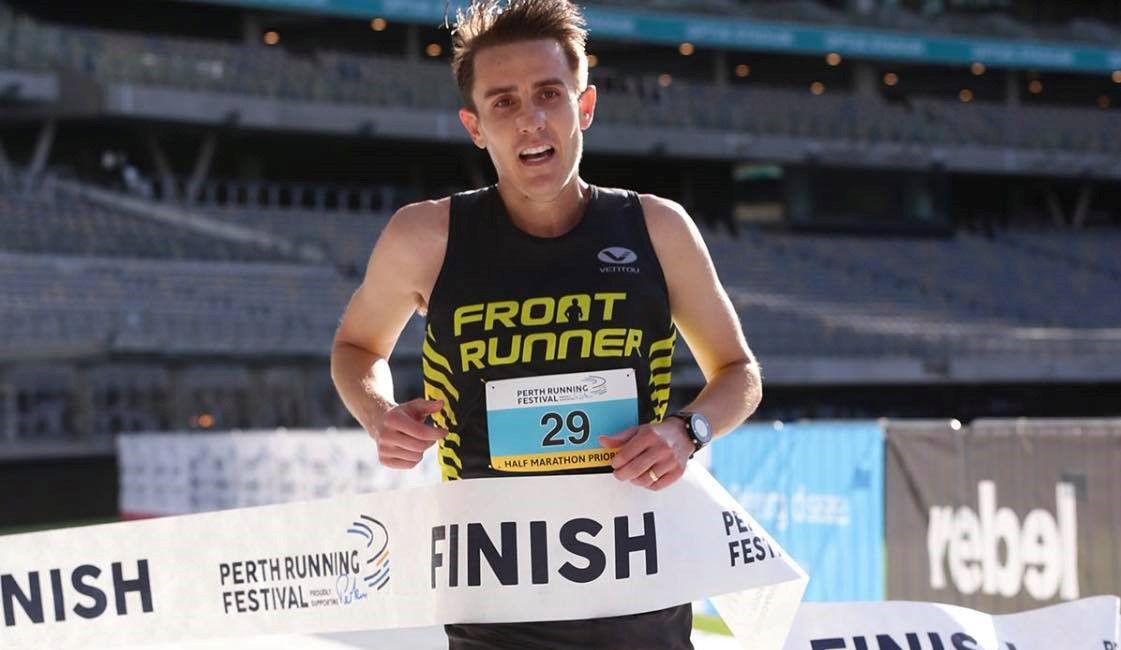My earliest memories of running are with my Dad when he helped me train for my primary school cross country race in year 7. A 2km run along the roads near my home, where Dad would let me sprint off at the end. Ever since, running has been a passion and the pursuit of PBs has ebbed and flowed, until recently where I’ve hit a bit of a groove with the marathon.
In May 2019 I attempted my first marathon in Adelaide; I had a blast and ran 2.26 (75/71). My wife was in her last trimester of pregnancy at the time and the marathon felt like a bit of a swan-song given running looked likely to take a back seat to our new adventure of parenthood. Fast forward to October 2019 and I’m lining up for the Melbourne Marathon, having swapped out some traditional training sessions for hybrid sessions and extra milage on my commute to and from work. I was seemingly in better shape than Adelaide and a little wiser about how to tackle the event. I ran 2.21 (71/70) which had me in sight of a new goal, sub 2.20.
Over the summer I rolled into a third marathon block and headed over to Lake Biwa, Japan in March 2020. This was one of the last international races before the Covid-19 pandemic and I managed to sneak in under my target time running 2.19.57 (70/69).
Racing for the next 18 months was fairly unpredictable and Raf and I decided to focus a little more on the track the over the summer of 2020/21 before training up for the Gold Coast Marathon in July 2021. The training block went well for Gold Coast however, like many other, we were disappointed to learn that the race was cancelled due to the pandemic. I took a couple of lighter training weeks, and then started to build back up for either the Melbourne or Perth marathons. It became clear fairly quickly, due to travel restrictions, that Perth would be the likely preferred option. Perth is typically quite a windy city and the marathon course is on footpaths so, on face value, it wasn’t quite as appealing as say the Gold Coast or Melbourne marathons. However we were blessed with some good conditions for mid-October and the home crowd certainly helped (I had a lot of family and friends on course) and I knocked down my PB a little further to 2.18 (69/69).
I thought it may be useful to share some of the key marathon-specific sessions that I’ve completed as part of my marathon training blocks, which typically span around 15 weeks in total. In the first 8 weeks Raf has us focus on building our fitness (training load) through longer threshold workouts, higher mileage and a long run of around 2.5hours. From weeks 8-13 we roll into a marathon specific phase which typically includes three key marathon-specific workouts. The last two weeks is the taper. I should note that I practise my race day fuelling during the marathon-specific workouts.
View this post on Instagram
Session 1 [strength endurance]: 2hours 45mins @ steady pace
A run this long, and at a stronger pace, means that we are running over marathon distance, which may be seen as a little controversial. However, the pace/intensity isn’t such that we are above our aerobic threshold, which is very important. We also reduce our training load before and after a workout like this as the legs can be a little tired over the following few days. The focus of the run is time at the given intensity and I use my heart rate and pace zones as the guide.
Session 2 [transitional specific]: 75mins steady into 3 by 16min @ marathon pace / 4min float
We’ve completed a number iterations of this sort of session ahead of a marathon. The pre-fatigue is time at a steady pace (for me 3.45-4.00min/km) which is between a tempo effort and easy pace, followed by a quick shoe change and then into 60-75mins of marathon pace intervals.
Session 3 [moderately specific]: 9 by 2km @ marathon pace / 1 km float
This is perhaps on the easier side of the marathon-specific workouts as the ratio of the float recovery to marathon pace efforts is relatively high. The floats for these workouts are around 20-30seconds slower than marathon pace and we typically try to target a course/location that mirrors the profile of the marathon we are training for.
Session 4 [highly specific]: 4 by 6km @ marathon pace / 1 km float
This session was completed two weeks after Session 3, described above, as part of the preparation for Perth. The ratio of marathon pace to recovery is a lot higher for this session and is probably about as ‘close to the fire’ as we get when it comes to these marathon-specific workouts. Raf wouldn’t prescribe a workout like this unless an athlete’s training stress (i.e. fitness load) is sufficiently high enough to tolerate this workout. Reflecting on this workout post-race, what we ran for this correlated very highly with the race performances for our training group.
Thanks to Runner’s Tribe for the opportunity and happy running.
Cheers
Dean



